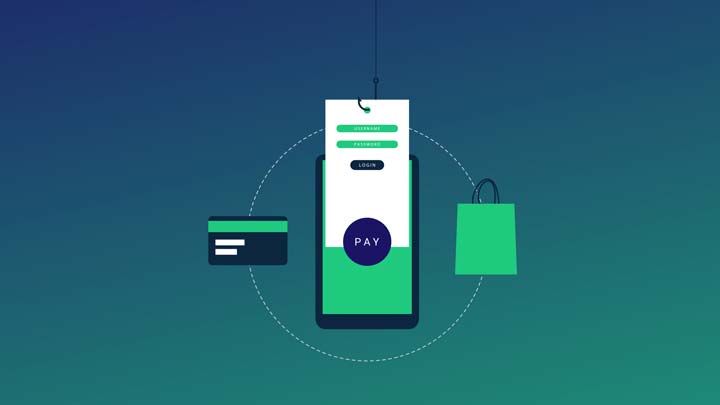What Is Account Takeover Protection?
Account takeover occurs when a fraudster gains control of a legitimate account by obtaining the account owner’s personal information and then changing login credentials. The fraudster then uses this account to carry out unauthorized transactions. Account takeover protection refers to the steps taken to prevent this from occurring.
By using machine learning and data science, account takeover protection can stop fraudulent logins by detecting anomalous behavior and recognizing signs of fraud. Metrics such as device age, account age, location, and transaction history are just a few of the data points measured to prevent account takeover.
What Is Account Takeover?
Account takeover is when cybercriminals use stolen credentials to access a legitimate account without the owner’s consent. Fraudsters use ATO attacks to transfer funds, steal information, and take advantage of any permissions that an account may have.
These attacks can be difficult to detect since the account is legitimate and already trusted on the network or application. ATO attacks have become increasingly popular due to the simplicity of the attack and the low perception of risk to fraudsters.
In Q2 of 2021, account takeover fraud had risen for the third time in a row, increasing by 75.2%. Fraudsters take advantage of data breaches by purchasing account details on dark web marketplaces. With a little scripting knowledge, attackers can test thousands of stolen credentials until they get a successful login.
Without ATO protection in place, businesses leave their customers susceptible to fraud. Even if a company has not suffered a data breach, accounts can still be compromised through reused passwords, stolen devices, and brute-force attacks.
How Does Account Takeover Work?
Account takeover typically occurs when credentials are stolen in a data breach or through a phishing scam. When account details are stolen through a breach, those accounts are often sold on dark web marketplaces or simply dumped online for free.
Phishing scams work by tricking the user into entering their credentials into a fake website. These sites look identical to the legitimate brand they are impersonating but have different URL addresses.
Once the victim enters their information, fraudsters steal that information and then redirect the login to the real website. While data breaches tend to target everyone equally, phishing attacks can be highly targeted.
For example, attackers can perform an ATO on a CEO by crafting highly customized phishing messages. Without ATO protection, fraudsters can leverage the CEO’s privileged account to send money, access information, and even add trusted users to the account.
A few other methods of ATO include the following:
● Man-in-the-Middle Attacks: Attackers intercept account details over unsecured wireless connections or deauthentication attacks.
● Mobile Banking Trojans: Malware places an invisible overlay on the login window of a financial website to steal login credentials.
● Spyware: Malicious software silently records keystrokes and sends that information back to the attacker.
● SIM Card Spoofing: Criminals trick mobile phone carriers to transfer the victim’s phone number to a new device. This allows the attacker to bypass some multi-factor authentication methods.
How to Prevent Account Takeover
Both businesses and consumers can do their part to protect themselves from ATO. Businesses should consider account takeover protection to shield their customers from attacks and protect their company assets from staff impersonation.
To prevent account takeover businesses should do the following:
● Implement account takeover protection.
● Educate staff and customers about account security and best practices.
● Enable two-factor authentication.
● Use business-grade antivirus software to stop spyware.
● Automatically take down phishing sites that impersonate your brand.
● Use a firewall or email gateway to remove phishing messages.
To prevent account takeover customers should do the following:
● Avoid reusing the same username and password.
● Use two-factor authentication whenever possible.
● Avoid clicking on suspicious links.
● Double-check the URL in the address bar to ensure the site you’re logging in to is real.
Account Takeover Protection
Account takeover protection is a form of fraud prevention that stops an attack before it can start. Modern account takeover protection uses machine learning to identify and block key indicators of fraudulent activity.
Machine learning models continuously study key indicators of account compromise and use that data to protect customer accounts. When a login attempt is deemed suspicious, that user is sent through a challenge flow that requires additional authentication.
This extra authentication step can be customized, but it typically comes in the form of a one-time password via text, email, or authenticator app. If the challenge is completed successfully, the login may proceed.
Products like Outseer Fraud Manager are designed to stop account takeover without impacting legitimate users. By leveraging a global data network and advanced data science, Outseer can identify the true identity of account logins with extreme accuracy. This not only helps keep customer accounts safe but improves overall customer experience and brand loyalty.
Enter: Outseer
Outseer provides seamless fraud protection that defeats both fraud and user friction at the same time. Through machine learning, data science, and advanced risk scoring, Outseer prevents 95% of all fraudulent transactions, with intervention rates as low as 5%.
That’s the best performance in the industry. By seeing what others can’t, we stop fraud long before a transaction ever occurs. To learn how you can protect your customers through the power of frictionless fraud prevention, request a free demo today.












